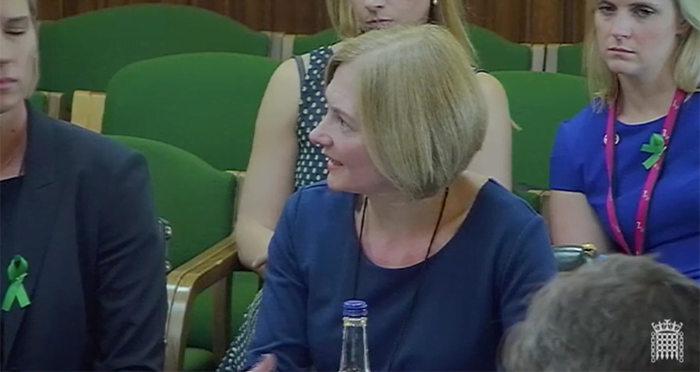Blame game begins over why City outfits didn’t include partners

MPs didn’t hold back yesterday when they quizzed Slaughter and May‘s head of human resources, Louise Meikle, about the firm’s lack of partners in its gender pay statistics.
The chair of the Business, Energy and Industrial Strategy Committee, Rachel Reeves MP, told Meikle her firm had published “bogus numbers” which “masked the true gender pay gap”. She added:
“If I was a young woman listening to this evidence, I’d think about not going [to Slaughter and May] and think about opting for one of the firms that does have the initiative to be open and transparent.”
Slaughters has borne the brunt of a lot of MP anger here. Though some firms did publish gender pay stats inclusive of partners, many others, including three out of the five magic circle, didn’t — and that’s because they didn’t have to.
Big companies must release their employee gender pay gap data every year because of the Equality Act 2010 (Gender Pay Gap Information) Regulations 2017. Law firm partners are not employed, so don’t fall under the regulations’ ambit. For all the committee’s rage, Slaughters and the plethora of other firms which didn’t include partner data were abiding by government regulations.
Some may argue the regulations are a floor not a ceiling, and that law firms should have gone beyond the regulatory minimum in the interests of transparency and openness. The problem is that, sans a centralised method of releasing partner-inclusive data, firms calculated their pay gaps in myriad ways and the outcome has been a bit of a mess.
Irwin Mitchell and Reed Smith, for example, released two gender pay gaps: one for employees, one for partners. Others, like Travers Smith, Clifford Chance and Pinsent Masons, lumped partners and employees together — but did so in differing ways (this to do with whether bonuses are looked at separately from average hourly rate). Albert Owen MP pummelled Meikle in committee yesterday over the impact employee-only gender pay gap information has on public scrutiny. Yet you’d be hard-pressed to find anyone who could easily scrutinise the cluttered pay gap data we’ve been dealt.

Also on the public scrutiny point, it’s worth casting an eye over the government’s centralised gender pay gap portal.
You’ll notice that, for all the praise lavished on firms for releasing partner-inclusive figures, only employee data appears on the portal. If you want to find firms’ higher, partner-inclusive figures, they’re in firm-specific pay gap reports probably no one outside the profession reads. How open and transparent is that?
Compulsory gender pay gap reporting is in its first year, and it perhaps would’ve been wiser for firms to stick to the government regulations then lobby for fresh guidance next year. Oxford law graduate Meikle conveyed this to the committee when she said “we’d like to see clear guidance from government on how to [include partner figures] in a way that means we can all report consistently”. Translation: sort the regulations out and stop blaming law firms.



